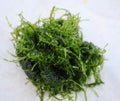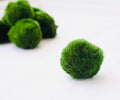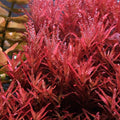How to Breed Red Cherry Shrimp
One of the simplest aquatic pets to breed in the fish tank is the Red Cherry Shrimps. There are three things to look out for when you are trying to breed Red Cherry shrimp: induce breeding, carry eggs, and raise the young. When these three are taken care of, your red cherry shrimp will grow its numbers rapidly.
There are factors to consider when inducing the Red Cherry Shrimp to breed. These are stable water parameters, a good food source, and a sexed pair of shrimps.
Identifying the Male and Female Shrimps
You can identify the gender of the male and female shrimps. The male red shrimp have a more faded color and are smaller in size compared to the female ones. The female shrimps have a yellow saddle-like part in their body. These are the eggs that develop inside their ovaries.
Younger shrimps' gender is almost unidentified. But you may notice that female shrimps have rounder and longer tails compared to males, and their color is more saturated as well.
Aquarium Water
Let’s talk about aquarium water. Its parameters should be stable within its acceptable ranges. Its pH level should be between 6.5 to 8.0. Its temperature should be maintained at 70-80 degrees Fahrenheit. The hardness of the water should not be either extremely soft or hard.
Source of Food
Shrimps need a consistent source of food, especially when breeding. If there is a small to moderate population of shrimps in a tank, naturally-occurring algae are considered an adequate source of food. If you wish to feed them with supplemental foods, you can give them blanched veggies and some fish foods as their food sources.
Breeding Process
When the female and male cherry shrimps reach about 4 to 6 months old, and they have met the requirements mentioned above, they are ready to breed. The breeding process may occur right after the female shrimp molts.
Molting means a process of shedding the shrimp’s exoskeleton. This enables the shrimp to grow in size and also grow a new exoskeleton. In this process, the female is vulnerable and sensitive and she will hide to keep herself safe.
What will happen is that she will hide and release a substance called “pheromones”. Pheromones are sexual hormones that are being sensed by the male shrimp notifying that she is ready for breeding.
You will notice that the male shrimp will search for the female shrimp by swimming, through the water column and breeding with her. The male will breed with the female by depositing his sperm. Then, the female’s eggs will be passed through the sperm on the underside of its tail.
After that, the female shrimp will carry the fertilized eggs until they hatch. The eggs are constantly fanned by the female's pleopods (swimming legs) to keep them oxygenated and clean.
The fertilized eggs will remain under the female's tail until they hatch. Her eggs are fanned by swimming legs (pleopods) to keep them clean and oxygenated. It will remain under its tail until hatched.
After the eggs are hatched, they will reproduce into juvenile shrimp. They will look like tiny replicas of adult shrimps. There are no stages like any saltwater and freshwater have. These tiny shrimp eat the same kinds of food that adult shrimp do. They also use claws on their front legs to chop the food chunks.
Don't Forget This!
Always make sure that these young shrimps are safe. Do not add any predators to the tank, not even fish. Even fish may not resist eating the small shrimps.
What to Add?
When breeding red cherry shrimps, it is important to put Java Moss or any slow-growing plants in your tank to help speed up the shrimps’ growth. These aquatic plants produce microfauna and other food products that young shrimps need.
It’s gonna be a fruitful and rewarding breeding process if you only understand and take care of these three factors. If you want to achieve the breeding process yourself, you may start with a good, healthy Red Cherry Shrimps available here at Aquafy.com.au
















